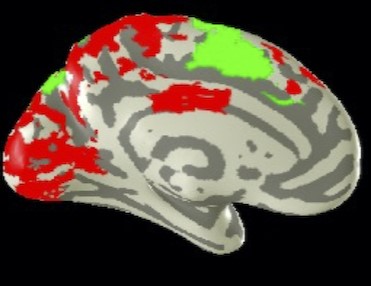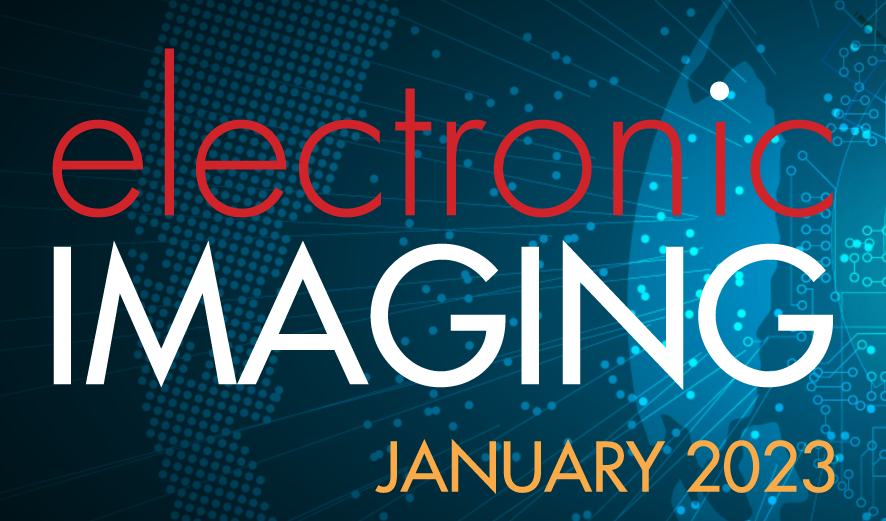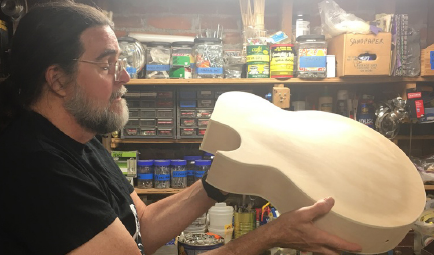
Does the functional organization of the brain connectivity of the visual motion areas depend on the loss of form vision? We report large-scale reorganization in low vision individuals following a unique form of non-visual spatial navigation training. Participants completed five sessions of the haptic Cognitive-Kinesthetic Memory-Drawing Training with raised-line tactile navigational maps. Pre- and post-training, whole-brain fMRI scans were conducted while participants (i) haptically explored and memorized raised-line maps and then (ii) drew the maps from haptic memory while blindfolded. Granger Causal connectivity was assessed across the network of brain areas activated during these tasks. Before training, the participants’ hMT+ connectivity in low vision was predominantly top-down from the sensorimotor pre- and post-central cortices, supplementary motor areas, and insular cortices, with only weak outputs to occipital and cingulate cortex. Large-scale reorganization of the connectivity strengthen the pre-top-down inputs to hMT+, but also dramatically extended its outputs throughout the occipital and parietal cortices, especially from right hMT+. These results are consistent with the fact that low vision individuals have a lifetime of visual inputs to hMT+, and it may become one of the principal perceptual inputs as their form vision is reduced, making it a key source of navigational information during the unfolding of the drawing trajectory. When forced to perform the spatiomotor task of haptic drawing without vision, however, hMT+ becomes a key conduit for signals from the executive control regions of prefrontal cortex to the medial navigational network and occipito-parieto-temporal spatial representation regions. These findings uncover novel forms of brain reorganization that have strong implications for the principles of rapid learning-driven neuroplasticity.

The conference on Human Vision and Electronic Imaging explores the role of human perception and cognition in the design, analysis, and use of electronic media systems. Over the years, it has brought together researchers, technologists, and artists, from all over the world, for a rich and lively exchange of ideas. We believe that understanding the human observer is fundamental to the advancement of electronic media systems, and that advances in these systems and applications drive new research into the perception and cognition of the human observer. Every year, we introduce new topics through our Special Sessions, centered on areas driving innovation at the intersection of perception and emerging media technologies.

The conference on Human Vision and Electronic Imaging explores the role of human perception and cognition in the design, analysis, and use of electronic media systems. Over the years, it has brought together researchers, technologists, and artists, from all over the world, for a rich and lively exchange of ideas. We believe that understanding the human observer is fundamental to the advancement of electronic media systems, and that advances in these systems and applications drive new research into the perception and cognition of the human observer. Every year, we introduce new topics through our Special Sessions, centered on areas driving innovation at the intersection of perception and emerging media technologies.

Vision is a component of a perceptual system whose function is to support purposeful behavior. In this project we studied the perceptual system that supports the visual perception of surface properties through manipulation. Observers were tasked with finding dents in simulated flat glossy surfaces. The surfaces were presented on a tangible display system implemented on an Apple iPad, that rendered the surfaces in real time and allowed observers to directly interact with them by tilting and rotating the device. On each trial we recorded the angular deviations indicated by the device's accelerometer and the images seen by the observer. The data reveal purposeful patterns of manipulation that serve the task by producing images that highlight the dent features. These investigations suggest the presence of an active visuo-motor perceptual system involved in the perception of surface properties, and provide a novel method for its study using tangible display systems


This paper proposes the method of interaction design to present haptic experience as intended in virtual reality (VR). The method that we named “Augmented Cross-Modality” is to translate the physiological responses, knowledge and impression about the experience in real world into audio-visual stimuli and add them to the interaction in VR. In this study, as expressions for presenting a haptic experience of gripping an object strongly and lifting a heavy object, we design hand tremor, strong gripping and increasing heart rate in VR. The objective is, at first, to enhance a sense of strain of a body with these augmented cross-modal expressions and then, change the quality of the total haptic experience and as a result, make it closer to the experience of lifting a heavy object. This method is evaluated by several rating scales, interviews and force sensors attached to a VR controller. The result suggests that the expressions of this method enhancing a haptic experience of strong gripping in almost all participants and the effectiveness were confirmed.